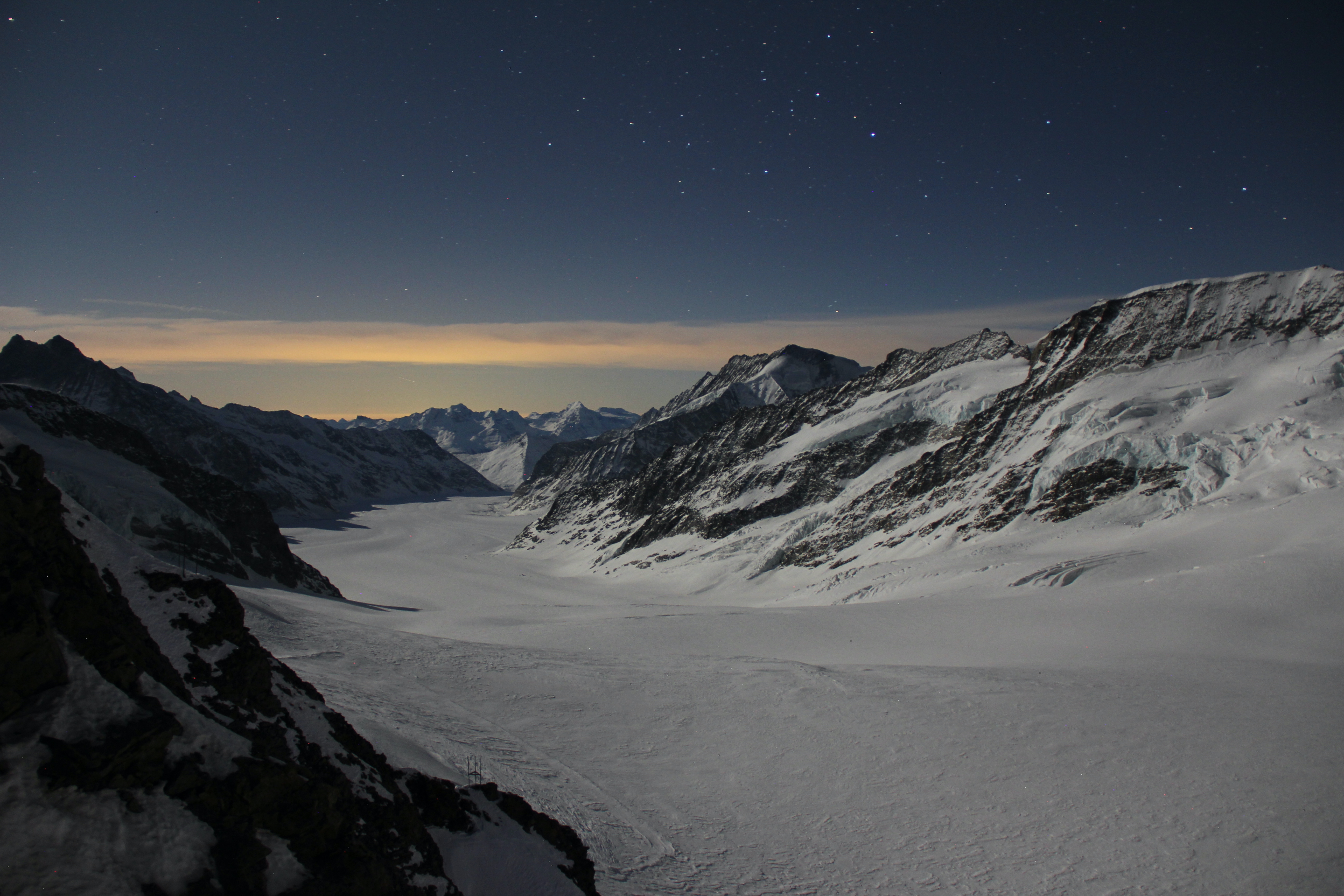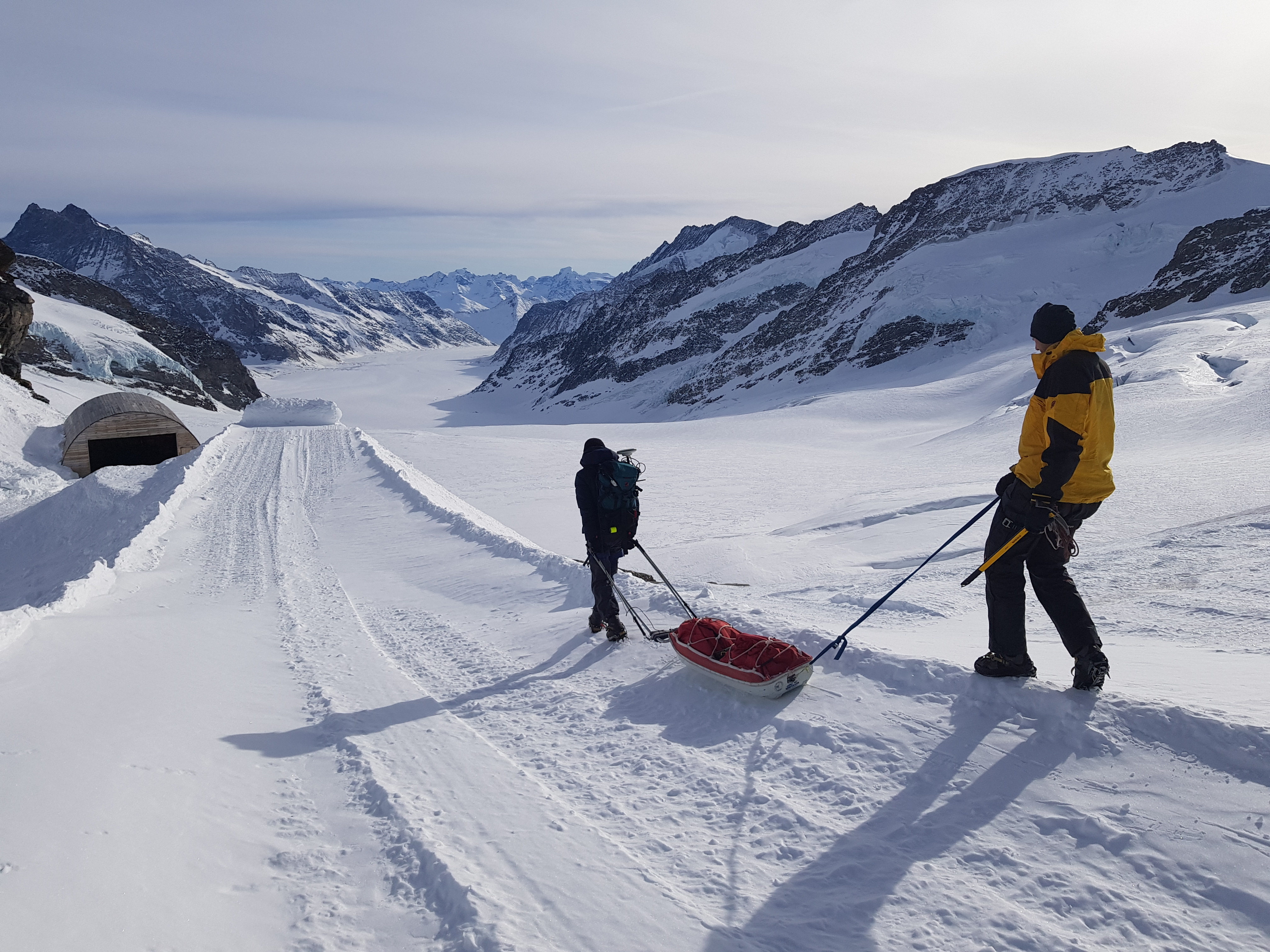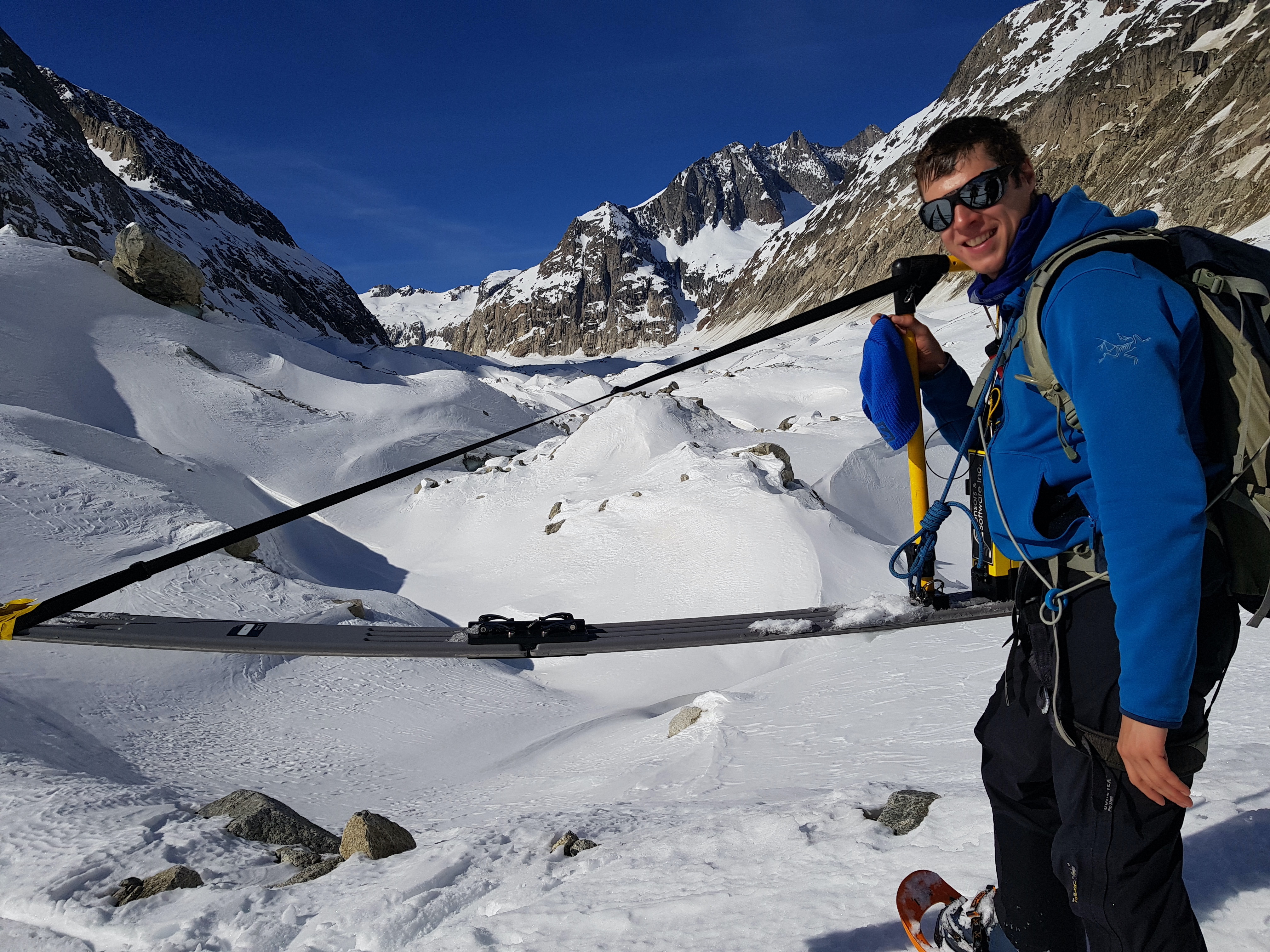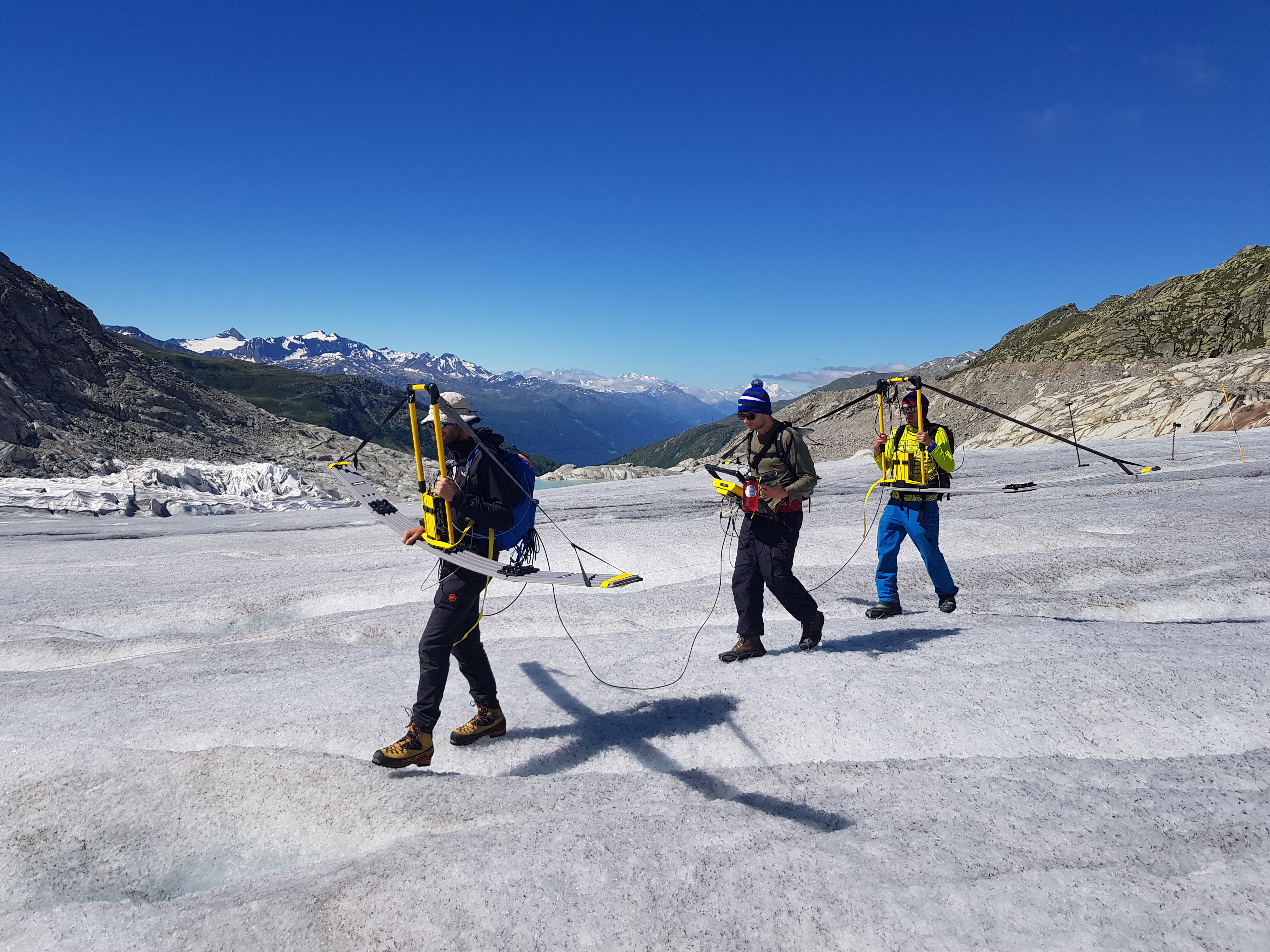Overview of PhD Project
Worldwide, glaciers are receding as a consequence of climate change. Due to the global glacier recession, glaciers are experiencing enhanced melting, which results in an increase in meltwater availability. This increased meltwater has the ability to alter the glacier’s hydraulic conditions and ultimately affects the dynamics of glaciers. Glaciers move through a combination of basal motion and internal ice deformation. The motion at the ice-bed interface comprises of both ice sliding along the bed and the deformation of subglacial sediments. Sliding at the bed is partially controlled by the water pressure at the ice-bed interface and therefore, knowledge of the subglacial hydraulic system is paramount in order to predict glacier movement and fundamentally the future evolution of glaciers. To date, our understanding of the glacier’s hydrological system is limited due insufficient field observations.

As part of my PhD, I used surface-based geophysical methods to detect and characterise an alpine glacier’s hydrological system. The aim is to improve our understanding of the drainage network of temperate alpine glaciers by using active seismic and ground-penetrating radar (GPR) to determine the properties in space and time of the hydrological system. For more details on my work please see the list of publications.


